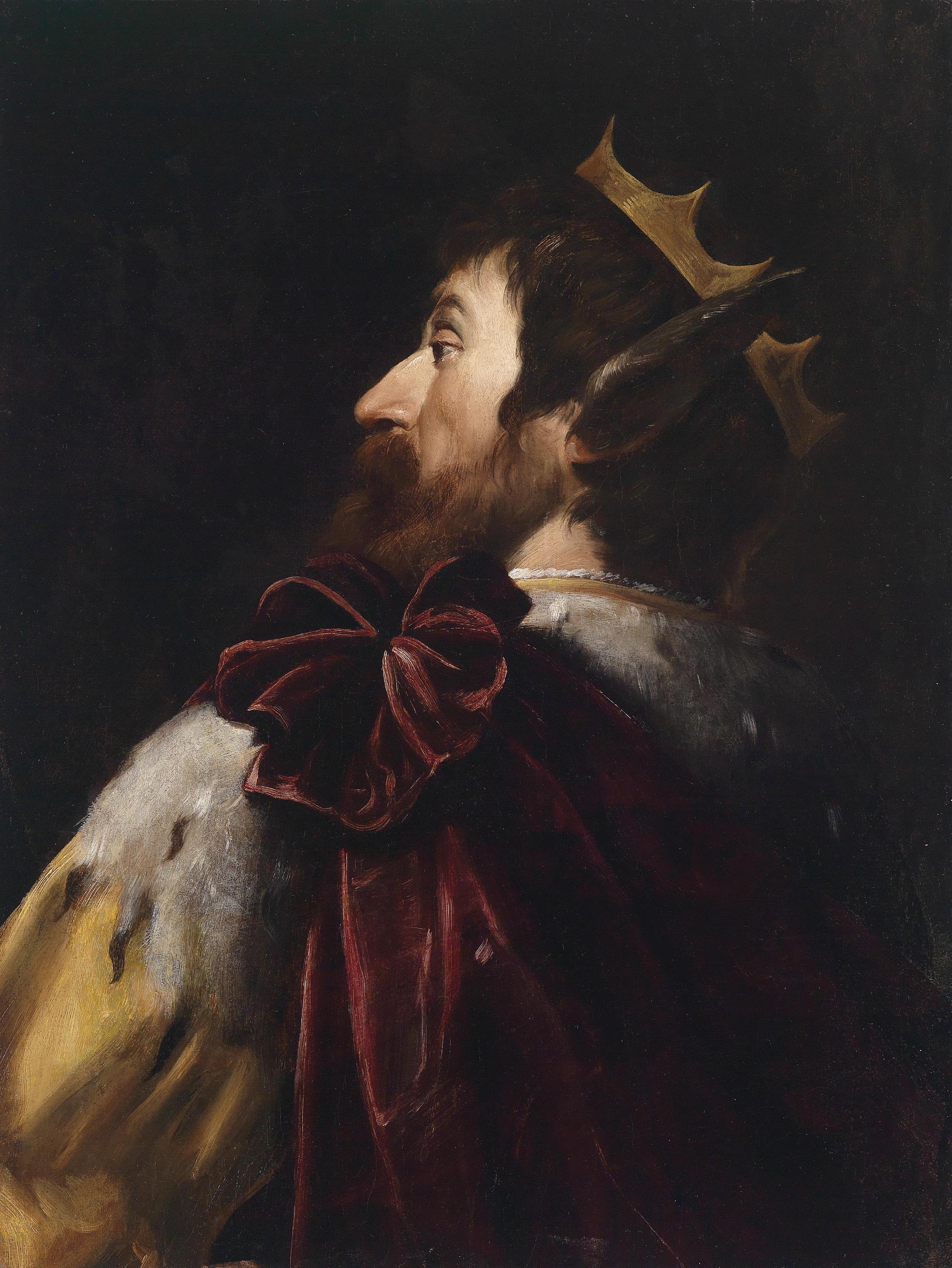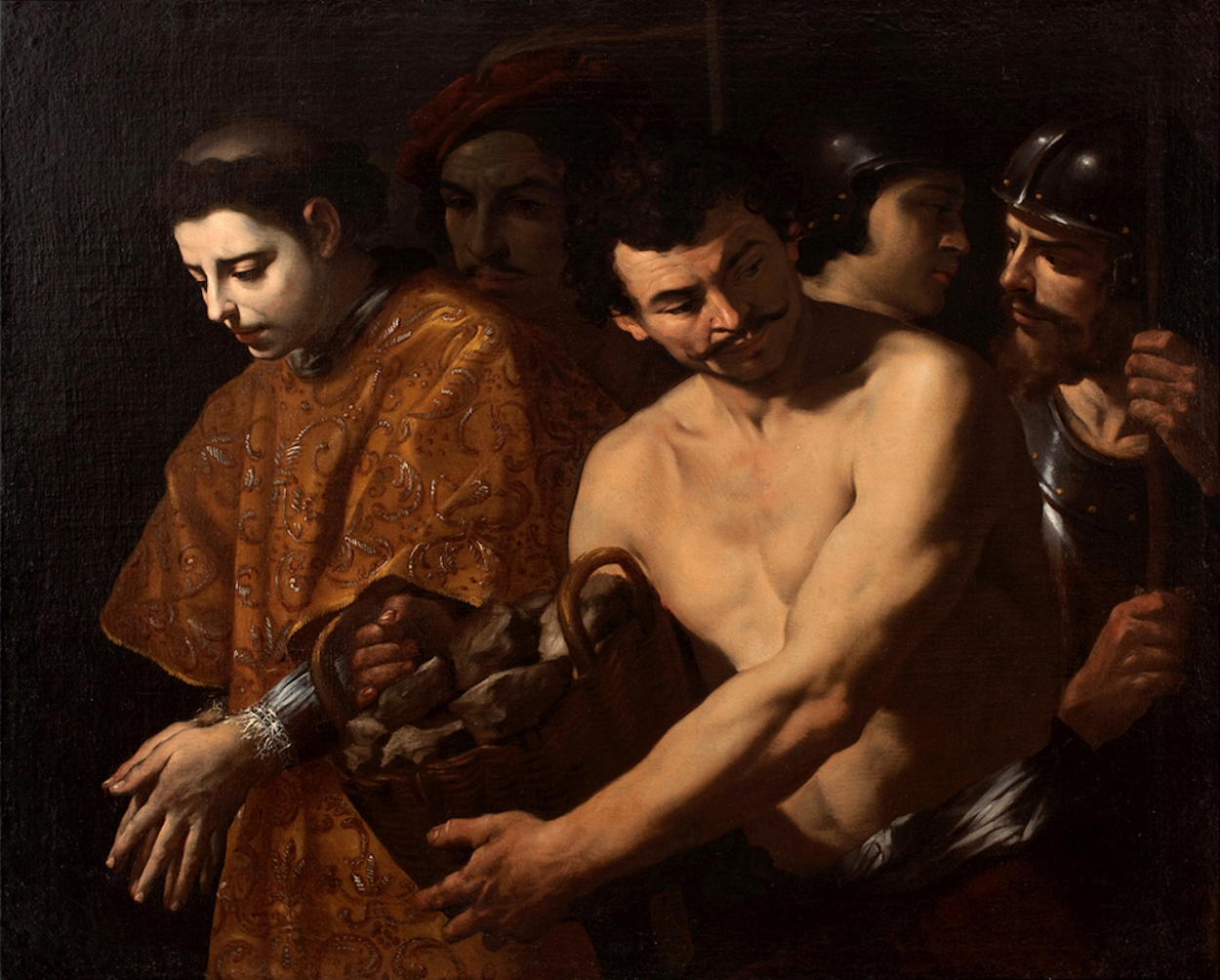Andrea Vaccaro was an Italian painter of the Baroque period. During the mid-1600s, Vaccaro was one of the most successful painters in Naples, then under Spanish rule. Very successful and valued in his lifetime, Vaccaro and his workshop produced many religious works for both local and Spanish patrons.
This is King Midas of the golden touch, but perhaps this is either before he asked for that power, or after Dionysus agreed to remove the power from the frightened Midas. As you can see, Midas has donkey ears here, the result of an encounter with another powerful deity. The pastoral god Pan was the inventor of the syrinx (panpipes), which were made famous in the USA by Johnny Carson’s relentless mockery of Gheorghe Zamfir (a Romanian pan flute musician). Only the American filmmaker Quentin Tarantino and the American rapper RZA had enough cool to make Zamfir’s music hip and fashionable in Kill Bill Vol. 1!
But back to the painting. Pan boasted that his music was better than that of the lyre-playing god Apollo, and Pan challenged Apollo to a musical contest. When Midas judged Pan to be the better musician, the outraged Apollo gave the king the ears of an ass. Understandably ashamed of his new features, Midas hid away in his palace and from then on always wore a turban so that only his barber knew the truth.
Vaccaro was initially influenced by Caravaggio, particularly by his use of chiaroscuro effects and the naturalistic rendering of his figures. From 1630 onwards, he also drew inspiration from the works of artists such as Guido Reni, Anthony van Dyck, and Pietro Novelli. His tenebrism became more illuminated and less harsh, influenced by the more sedate sources such as Pietro da Cortona. Tenebrism, from the Italian for murky and mysterious, is a pronounced chiaroscuro, often looking like a Renaissance spotlight effect. The bright spotlight on highlighted features of the subject has the surprising effect of making the dark areas of the work more interesting. This work is likely one of Vaccaro’s later works, but there is no way to definitively date the work other than to say it was before 1670, the year of the artist’s death.
- Clinton Pittman
P.S. Many painters were influenced by Caravaggio. Read here about the Caravaggisti. Were they fans, epigons, or masters?


 Andrea Vaccaro
Andrea Vaccaro